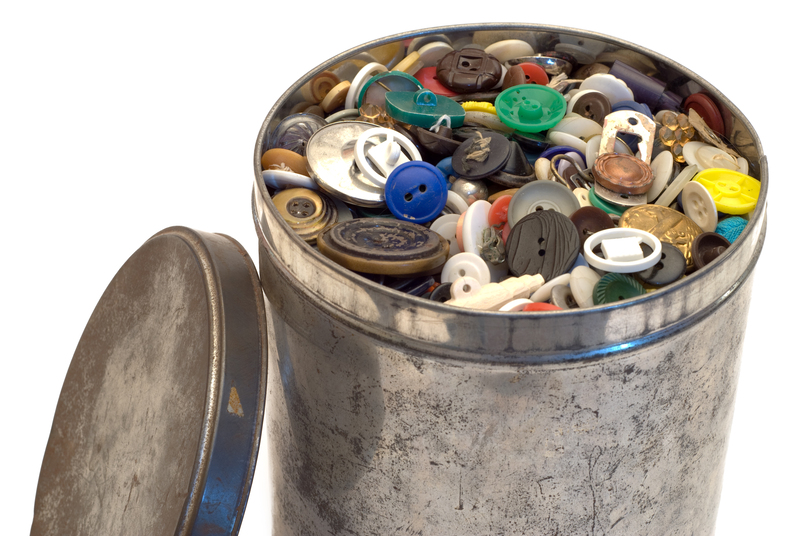Streamlining Plant Pot Disposal Methods: A Comprehensive Guide
Plant pots are an essential part of gardening and landscaping, but with the increasing focus on sustainability, the methods of disposing of these pots have become a concern for both individuals and businesses. Improper disposal of plant pots, especially plastic ones, contributes to environmental pollution and increases landfill waste. In this article, we will explore effective strategies and best practices for streamlining plant pot disposal methods that are eco-friendly, efficient, and practical for everyone.

Why Is Plant Pot Disposal Important?
With millions of gardeners, landscapers, and nurseries using plant pots each year, the number of pots discarded is staggering. Most traditional plant pots are designed for durability, which makes them challenging to break down in natural environments. This leads to a host of environmental issues:
- Increased landfill waste
- Non-biodegradable plastics contaminating soil and water
- Resource wastage since many pots can be reused or recycled
- Inefficient use of municipal waste services
Streamlining the disposal of garden pots is crucial in reducing our environmental impact and promoting a sustainable lifestyle. But what are the most effective ways to handle this often-overlooked issue?
Types of Plant Pots and Their Environmental Impact
Before looking at disposal techniques, it's essential to understand the materials used in planter pots and how they affect our planet:
- Plastic Pots: Widely used due to their lightweight and affordability, plastic plant pots are difficult to recycle due to the type of plastic, color, and any residual soil or plant matter.
- Ceramic and Clay Pots: Heavy and breakable, these pots are earth-derived but disposal is hampered by glazing and paint, limiting options for eco-friendly disposal.
- Biodegradable Pots: Made from materials like wood fiber, peat, or coir, these are designed to decompose naturally but may not always degrade as intended in landfill conditions.
- Metal and Fabric Pots: Less common, these types are often reusable but require specific recycling methods when damaged.
Streamlined Plant Pot Disposal Methods: Best Solutions
To effectively manage plant pot waste, both individuals and organizations must adopt a holistic approach to streamlining plant pot disposal. Here are the most practical and environmentally responsible methods.
1. Reuse and Repurpose Plant Pots
The simplest way to minimize disposal is by reusing plant containers:
- Repotting: Use old pots for new plants or propagate cuttings. Even cracked pots can be repurposed for hardy outdoor plants that need better drainage.
- Creative Projects: Turn broken pots into garden markers, decorative mosaics, or fairy gardens.
- Educating Community: Schools, community gardens, and local organizations often appreciate donated pots for educational projects.
Reusing plant pots not only conserves resources but also saves money and adds creativity to gardening.
2. Return Plant Pots to Nurseries and Garden Centers
Many nurseries and large retailers have adopted plant pot recycling programs:
- Take-Back Programs: Some stores allow customers to return empty pots, trays, and labels for reuse or recycling.
- Collection Points: Dedicated bins at entry points make it convenient for customers to drop off used pots.
- Refill Initiatives: Some garden centers refill returned pots with new plants, reducing packaging and cost.
Check with your local retailer and encourage them to establish or expand such plant pot take-back schemes to make recycling streamlined.
3. Recycling Plastic Plant Pots
Not all plastic pots are economically or practically recyclable, but the situation is improving. Here's how to approach plastic plant pot recycling:
- Check the Label: Look for the recycling number, usually #2 (HDPE) or #5 (PP), which are more commonly accepted by recyclers.
- Clean Thoroughly: Remove soil, roots, and labels to avoid contamination--dirty pots are often rejected.
- Municipal Collection: Contact your local waste management to find out if garden plastics are accepted in curbside recycling.
- Special Drop-Off Events: Participate in annual recycling drives or local horticultural society collection days for bulk drop-off.
Note: Not all black plastic pots are recyclable. Many optical sorters used in recycling can't detect dark plastics. Seek out garden centers with specialist recycling partners.
4. Composting Biodegradable Plant Pots
Biodegradable pots made from peat, coir, cardboard, or wood fiber can often be composted. To streamline biodegradable plant pot disposal:
- Confirm compostability by reading the packaging or manufacturer's instructions.
- Tear or break pots into small pieces to speed decomposition.
- Mix with other compostable materials for better aeration and breakdown.
- If possible, use these pots by planting them directly into the soil along with the plant.
This not only removes the need for separate disposal but also enriches garden beds and reduces waste.
5. Disposing of Ceramic, Clay, and Terracotta Pots
Recycling ceramic plant pots is difficult due to glazing and paint. Here are some options:
- Reuse as garden borders, drainage fillers, or art objects.
- Crush for Pathways: Broken pots make excellent material for garden paths or drainage bases.
- Disposal: Place small amounts in construction waste bins if local regulations allow. Never dispose of glazed ceramics in compost or regular recycling.
Contact your city's recycling facility to check for specific disposal instructions for ceramics or terracotta.
6. Innovative Solutions: Bulk Plant Pot Collection & Recycling Services
For landscapers, nurseries, and local authorities, managing large volumes of plant pots requires a streamlined, systematic approach:
- Partner with Specialized Recyclers: Some companies now collect and process horticultural plastics in bulk, offering convenient pick-up services.
- Community Drop-Offs: Organize neighborhood events where residents can return plastic pots for large-scale recycling.
- Supplier Take-Back Agreements: Encourage suppliers to take back pots as part of a closed-loop supply chain.
Establishing routine economies of scale makes the process sustainable and reduces the environmental burden at the community level.
Best Practices for Streamlined Plant Pot Disposal
Implementing effective plant pot disposal techniques is not only about following the right method but also about raising awareness and promoting participation. Here are some tips to ensure efficient plant pot disposal:
- Educate & Inform: Share knowledge with friends, neighbors, and on social media about proper disposal options.
- Choose Wisely: Select pots made from recycled or biodegradable materials when purchasing new plants.
- Minimize Use: Whenever possible, plant directly in the garden or use seed trays and pots that can be reused multiple seasons.
- Label Clearly: If organizing a collection, clearly label collection bins and offer instructions to avoid contamination.
- Advocate: Request local garden centers adopt sustainable pot return and recycling programs.
Case Study: Effective Plant Pot Return Programs in Action
GardenWorks, a network of garden centers in North America, implemented a plastic pot return program. Customers can return their used plastic pots, trays, and hanging baskets, which are then transported to a specialized recycler. In 2023 alone, GardenWorks diverted over 20 tons of plastic from landfills--an example of how retail initiatives can have a tangible impact.
Future Innovations in Streamlined Plant Pot Disposal
As environmental awareness grows, new technologies and business models are emerging that promise to further streamline plant pot disposal methods:
- Closed-loop Recycling: Advances in sorting and processing technology allow certain grades of plastic to be fully recycled into new pots, supporting a circular economy.
- Bioplastics & Degradable Polymers: Manufacturers are developing plant-based plastics that break down more easily, providing the durability of plastic without the disposal headaches.
- Deposit Schemes: Similar to bottle deposit programs, garden centers could offer incentives for returning used pots, encouraging return and reuse.
- 3D Printing & Custom Recycling: Some companies are experimenting with converting old pots into filament for 3D printers, offering a high-tech recycling pathway.
Challenges to Overcome in Plant Pot Waste Management
Even with improvements, there are still barriers to totally efficient plant pot disposal:
- Lack of Standardization: Different types and colors of plastic, unknown additives, and contaminants still make recycling complex.
- Limited Infrastructure: Not all areas have access to specialized recycling or dedicated collection bins for garden plastics.
- Consumer Awareness: Many gardeners remain unaware that traditional recycling does not always accept garden plastics.
- Economic Viability: Fluctuating prices for recycled plastic and high transportation costs can discourage recyclers.
Addressing these challenges requires government, industry, and consumer collaboration for scalable solutions.

Conclusion: Making Streamlined Plant Pot Disposal the Norm
Streamlining plant pot disposal methods is an essential part of sustainable gardening and environmental stewardship. By reusing, recycling, repurposing, or composting plant pots, and supporting take-back schemes, the plastic and waste impact of the horticultural industry can be greatly reduced. Initiatives from individuals, communities, and businesses are all needed for true change.
As you plan your next garden project, remember to consider not just the life of the plant, but the afterlife of its pot. With small steps--like participating in local pot return programs, choosing biodegradable options, and recycling responsibly--you can be part of a growing movement to streamline plant pot disposal for a greener, cleaner world.
Frequently Asked Questions (FAQs) about Streamlining Plant Pot Disposal
What kind of plant pots can be recycled?
Most plastic plant pots labelled with recycling numbers #2 (HDPE) and #5 (PP) are recyclable, as long as they are clean and free of soil. Check your local recycling guidelines for specifics.
What can I do with broken clay or ceramic pots?
Broken clay or ceramic pots make great drainage material for new plant pots, pathway lining, or decorative garden art. If disposal is necessary, ask your local waste center for guidance.
Are biodegradable pots always compostable?
Many biodegradable pots can go in the compost, but some require specific conditions to break down. Always check product details or manufacturer instructions before composting.
Can I put plastic plant pots in my curbside recycling?
This depends on your city's recycling facilities. Some accept certain plastics, while others do not. Always clean the pots and check with local regulations before placing them in curbside bins.
How can I encourage my local nursery to adopt a pot return scheme?
Speak with management, gather support among fellow customers, and present examples of successful programs. Retailers respond well to customer demand for sustainable options.
By following these guidelines and advocating for better plant pot disposal systems, we can all contribute to a more sustainable future in gardening and horticulture.